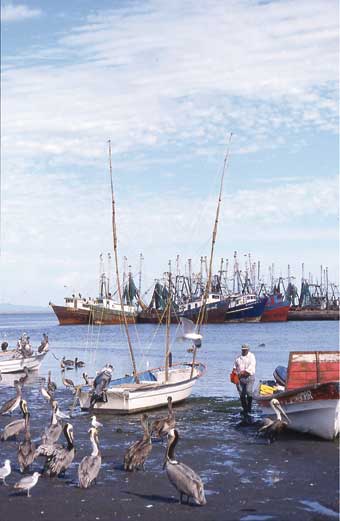The Politics of Shrimp
by Jeff Della Penna
|
It hasn’t been easy being in the shrimp business in Maine. The last fishing season was just 40 days long, which was two days better than the previous season and 14 days better than 2002. On the bright side, the days seem to be increasing. But then, for the past three years, the Technical Committee for the ASMFC’s (Atlantic States Marine Fisheries Commission) Northern Shrimp Section has recommended no shrimp season at all.
“It’s been hard enough shrimping, but when you don’t know for sure if you’re going to even have a season until the very last minute, it makes it almost impossible,” said Craig Sproul, a shrimp trap fisherman and captain of Cutter II out of Boothbay Harbor.
That issue–the uncertainty of a shrimp future–has taken on a new light for Maine fishermen lately, especially with television and radio ads promoting “all-the-shrimp-you-can-eat” deals at several national restaurant chains. Over 90 percent of the shrimp consumed in the United States
continue
|
 Large and small shrimp boats at Yavaros, Mexico. Photo Paul Molyneaux Large and small shrimp boats at Yavaros, Mexico. Photo Paul Molyneaux |
|
|
|
|
Hard Knocks
by Mike Crowe
|
In recent years, historical records have shown that around the time of the American Revolution, as much as 25 percent of American mariners were African-American. This was not the beginning of their working at sea, for there is evidence they sailed as translators on slave ships in the 1600’s, were among pirate crews, and for many years sailed aboard whaling ships. But it was on merchant ships that their status rose from cooks, stewards and cabin boys, until, by the revolution, they were engaged as able-bodied seamen.
Before the revolution, most every person of color in the British North American colonies was a slave, after it, there were an estimated 60,000 freed men. The American Revolution was the first major opportunity for freedom. Privateers and state navies, including Massachusetts and Connecticut, actively enlisted blacks. It was the beginning of freed slaves gaining a degree of social position in the industry. The American shipping industry boomed.
continue
|

The crews of many of the great schooners were composed of white officers
and engineers, with the bulk of the deckhands being made up of African
Americans. At times more than 20 percent of American seamen have been
African American. The photo was taken aboard the Bath built 305' schooner
Davis Palmer. Photo courtesy Maine Maritime Museum, Palmer Collection.
|
|
  
|
|

